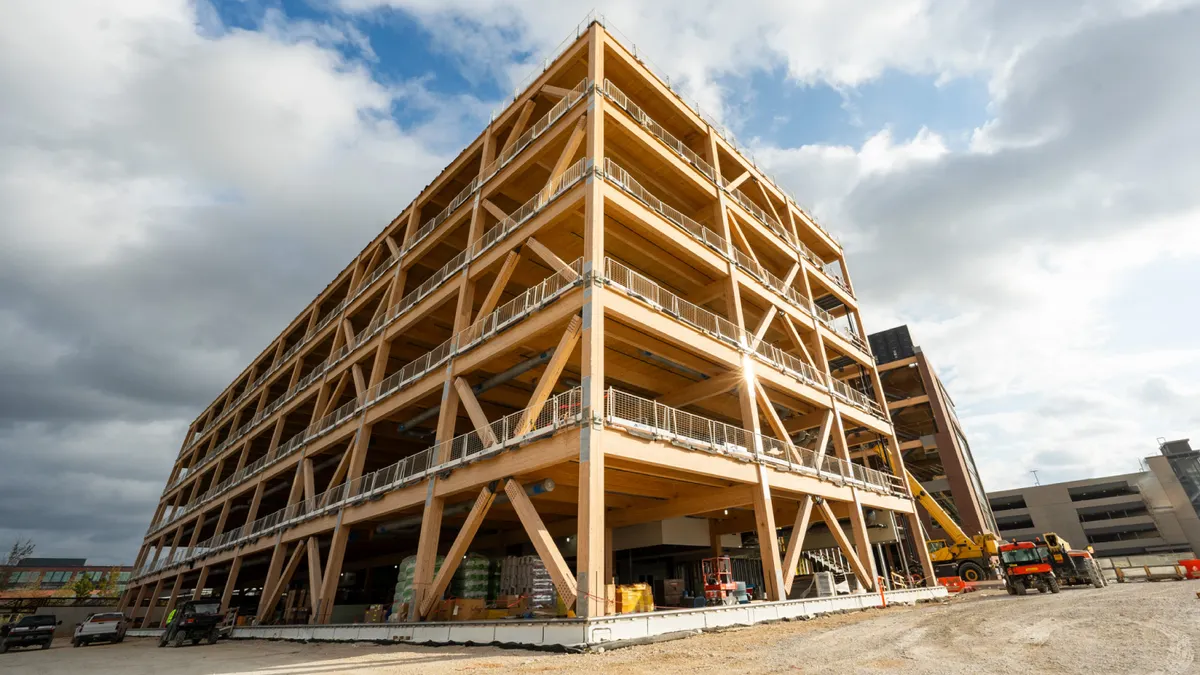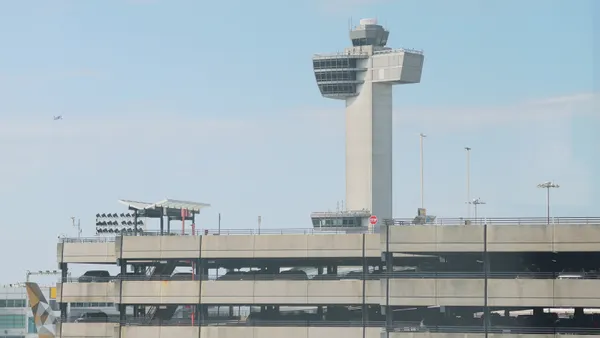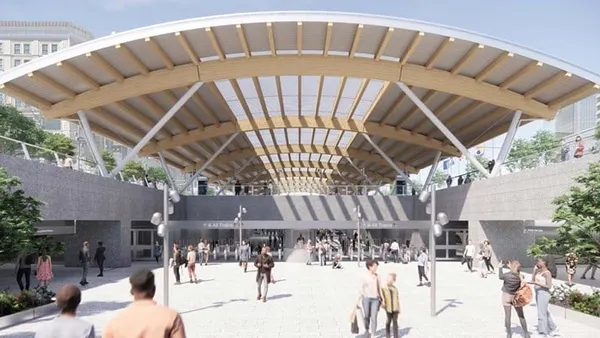Dive Brief:
-
The city of Chicago last Wednesday broke ground on an elevated bike and pedestrian trail that will connect North Side neighborhoods to three parks and other recreational activities, according to a press release from Mayor Rahm Emanuel's office.
-
The 312 RiverRun path will be 16 feet wide so that cyclists, runners and others can use it at the same time, and 18 feet high to allow for boat traffic underneath. The city is touting the project as safe because it does not require users to cross major streets.
-
The project is supported by local, state and federal funding and is part of Emanuel's goal of creating a city river trail system.
Dive Insight:
Chicago's RiverRun project falls squarely into the category of adaptive reuse, or, more simply put, the process of finding a new purpose for an existing piece of infrastructure or building.
New York City's High Line elevated park, similar to the RiverRun trail, is what many turn to when they're looking for examples of a successful adaptive reuse project. The success of the High Line has led to a series of art installations on the former rail bridge itself, as well as connected public gardens and restaurant and entertainment spots along the way.
Denver's High Line Canal has a similar history as that of New York's High Line and Chicago's RiverRun in that it is a recreational trail that has evolved from a former infrastructure system. Gina Ford, principal and landscape architect at Sasaki Associates in Boston told Construction Dive last year that the 71-mile canal was built in the late 1800s to transport water from the foothills of the Rocky Mountains to farmers and to Denver residents. The canal is intermittently dry, and residents repurposed parts of it as a recreational trail and have been using it as such for decades, even though it is owned by Denver Water.
These features not only provide the chance for exercise and recreation, but also are central to urban planning. Alex Carrick, chief economist for ConstructConnect, told Construction Dive in February 2016 that projects like rails-to-trails appeal to a broad demographic range and give millennials and baby boomers alike a reason to take advantage of city living.











